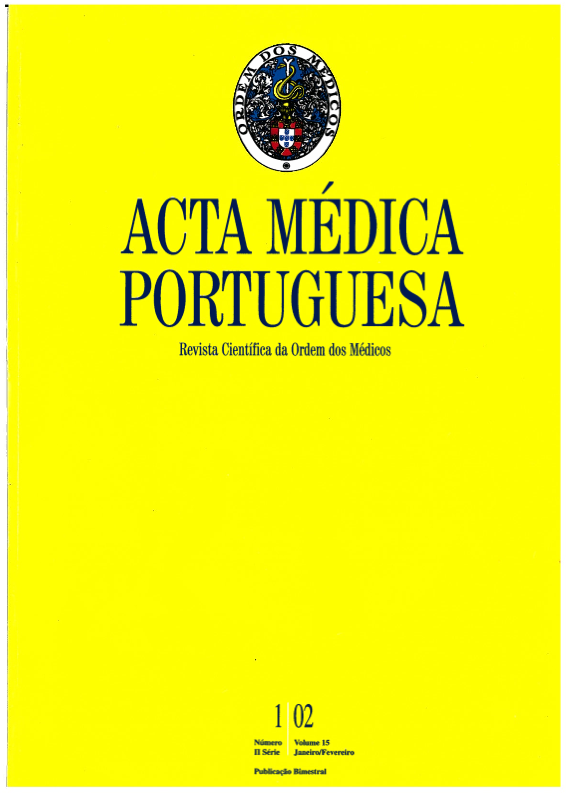Secondary biliary cirrhosis in a patient with histiocytosis X.
DOI:
https://doi.org/10.20344/amp.1904Abstract
Histiocitose X or Histiocytosis of the Langerhans cells represents a complex spectrum of clinical alterations, resulting from infiltration by anomalous histiocytes of various organs, including the skin, bones, lungs, lymphatic ganglia and liver. Liver disease is rare and the mechanism by which lesions appear is unknown. Cholestasis results from phenomena of sclerosant colangitis, which affects the intrahepatic ducts, or from proliferation of histiocytic cells in the periportal areas. Some patients develop biliar cyrrhosis. The authors present the clinical case of a 62-year-old female patient, hospitalized for chronic cholestasis, diabetes and gallstone in the main bile duct. She had metastatic lesions of the hypophysis and bones, the biopsies of which revealed infiltration by histiocytic cells. Endoscopic Retrograde Colangiopancreatography (E.R.C.P.) revealed dilatation of intrahepatic bile ducts and stenosis of left hepatic duct. A histological study of the hepatic biopsy showed chronic cholestasis and areas of fibrosis, without infiltration by histiocytic granulomas, which were observed in the medular biopsy and in the thyroid nodule cytology.Downloads
Downloads
How to Cite
Issue
Section
License
All the articles published in the AMP are open access and comply with the requirements of funding agencies or academic institutions. The AMP is governed by the terms of the Creative Commons ‘Attribution – Non-Commercial Use - (CC-BY-NC)’ license, regarding the use by third parties.
It is the author’s responsibility to obtain approval for the reproduction of figures, tables, etc. from other publications.
Upon acceptance of an article for publication, the authors will be asked to complete the ICMJE “Copyright Liability and Copyright Sharing Statement “(http://www.actamedicaportuguesa.com/info/AMP-NormasPublicacao.pdf) and the “Declaration of Potential Conflicts of Interest” (http:// www.icmje.org/conflicts-of-interest). An e-mail will be sent to the corresponding author to acknowledge receipt of the manuscript.
After publication, the authors are authorised to make their articles available in repositories of their institutions of origin, as long as they always mention where they were published and according to the Creative Commons license.









